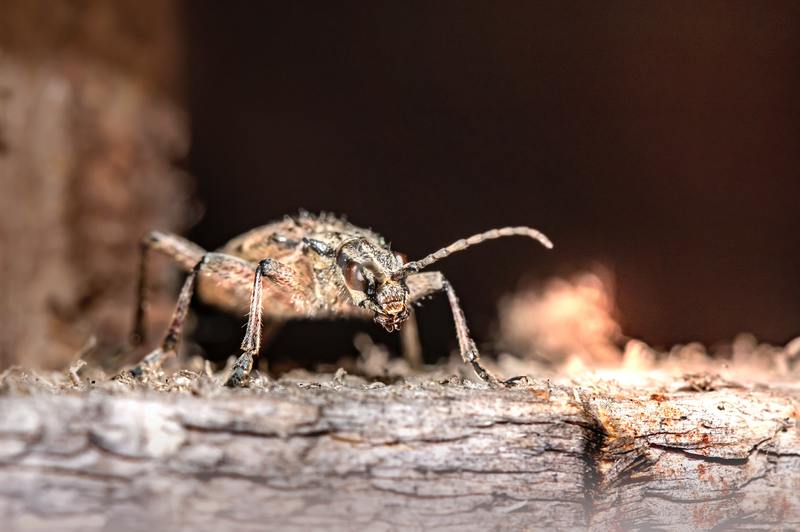If you are looking for an environmentally friendly pest solution, here are the things you need to know about “what is biological pest control”.
People nowadays never stop innovating and thinking about dealing with different kinds of pest problems. Biological pest control or simply biocontrol is one of the methods you can use to control and lessen pests such as mites, insects, weeds, and plant diseases using other organisms.

The Account Of Biological Pest Control
Harry Scott Smith first used the term “biological control” at the meeting of the Pacific Slope Branch of the American Association of Economic Entomologists in Riverside, California in 1919.
In 1905 the United States Department of Agriculture (USDA) began the large-scale biological control program, sending entomologists to Japan and Europe to look for natural enemies of the moths with brown-tail, gypsy moth, Lymantria, Euproctis chrysorrhoea, invasive pests of trees and shrubs.
The program expansion leads to the development of many concepts, principles, and procedures for implementing biological control programs all around the world.
A natural alternative for pesticide
You can choose to use natural alternatives rather than chemicals, which work with nature. Typically, biocontrol is one natural way to manage invasive species like a pest by introducing a natural predator, which minimizes the pest population and its impacts on the surrounding areas.
What Are The Three Strategies Of Biological Pest Control?
There are three types of biological control approaches applied in pests control programs.
1. Importation
Also known as classical biological control, importation involves introducing a set of natural enemies to a new location where they do not come out naturally. This approach will be most effective at controlling pests; because of the colonizing ability to keep pace with changes to the habitat in time and space.
2. Augmentation
The augmentation approach, on which the gardeners put an additional number and types of natural enemies in the landscape. The main goal of augmentation is not to replace the existing natural enemies but to provide another help or source of control.
3. Conservation
The third biological pest control method is the conservation of existing natural enemies in an environment. In this case, the conservation of natural enemies adapting to the habitat is cost-effective, straightforward, and most available to growers.
Why is biological control better for the environment?
Agricultural scientists believe that the biological pest control method is simple, environmentally friendly, and more effective than the traditional pesticides on agricultural processes. If you want one of the safest and most effective biological control agents for your crops, here’s a tip on “what do pest control companies use“.
The 3 Ps Of Biological Pest Control
Listed is the three biological pest control agents that most growers use:
1. Predators
The predators are usually prey catchers and eaters and are mainly free-living species. Some common predatory arthropods include carabid beetles, ladybird beetles, staphylinid beetles, syrphid flies, minute pirate bugs, lacewings, bugs (nabid and big-eyed), and spiders.
Insectivorous predators are the most common planters used as a biological control agent.
2. Pathogens
The disease-causing organisms known as pathogens is a biological control often called microbial control. Bacillus thuringiensis is one of the popular microbial control agents available commercially, and for some gardeners, it is an effective way to use for pest control.
If you want to know how to use thuricide for your garden, here’s a guide you can follow.
3. Parasitoids
These pest control agents are sometimes called parasites, commonly do not eat their hosts directly, and are among the widely used biological control agents. The adult parasitoids lay their eggs closely in their host insect — they look like large house flies sticking their white, oval eggs on the backs of existing pests — and are most effective at decreasing pest populations.
What is the difference between biological and chemical pest control?
Biological and chemical pest control are two well-known approaches. Each approach differs from one another, and if you want more distinction between biological and chemical pest control, you can check this one.
Biological pest control
- A natural byproduct and part of an ecosystem
- It takes a little longer to effect
- Less harmful
Chemical pest control
- A man-made substance
- Often fast-acting and effective
- Contains chemicals that can be harmful
What are the benefits of biological pest control?
- Poisonings are not a problem
- There is a favorable cost ratio
- They are environmentally friendly
- Toxicity is low
- Pathogenicity on beneficial fauna is low
- They are natural products
- The application is safe and simple
- The establishment in crops is easy
- Helps in biological properties of soils recovery
- Putting another control source helps lessen the appearance of other pests
- Safe and does not pose any harm to humans
Conclusion
You have now learned the answer to the question of “what is biological pest control”. Whether you are a farmer or gardener, this one-of-a-kind method will surely help you in your pest pains.
Ideas and pieces of information are always around — look for it, and you can make a difference today.
